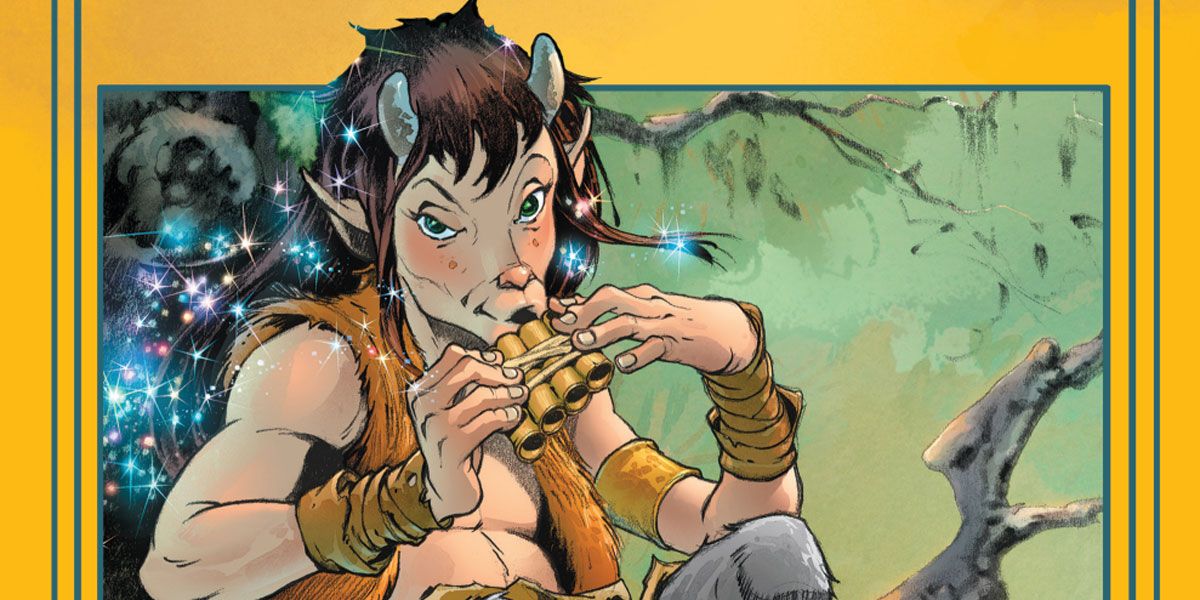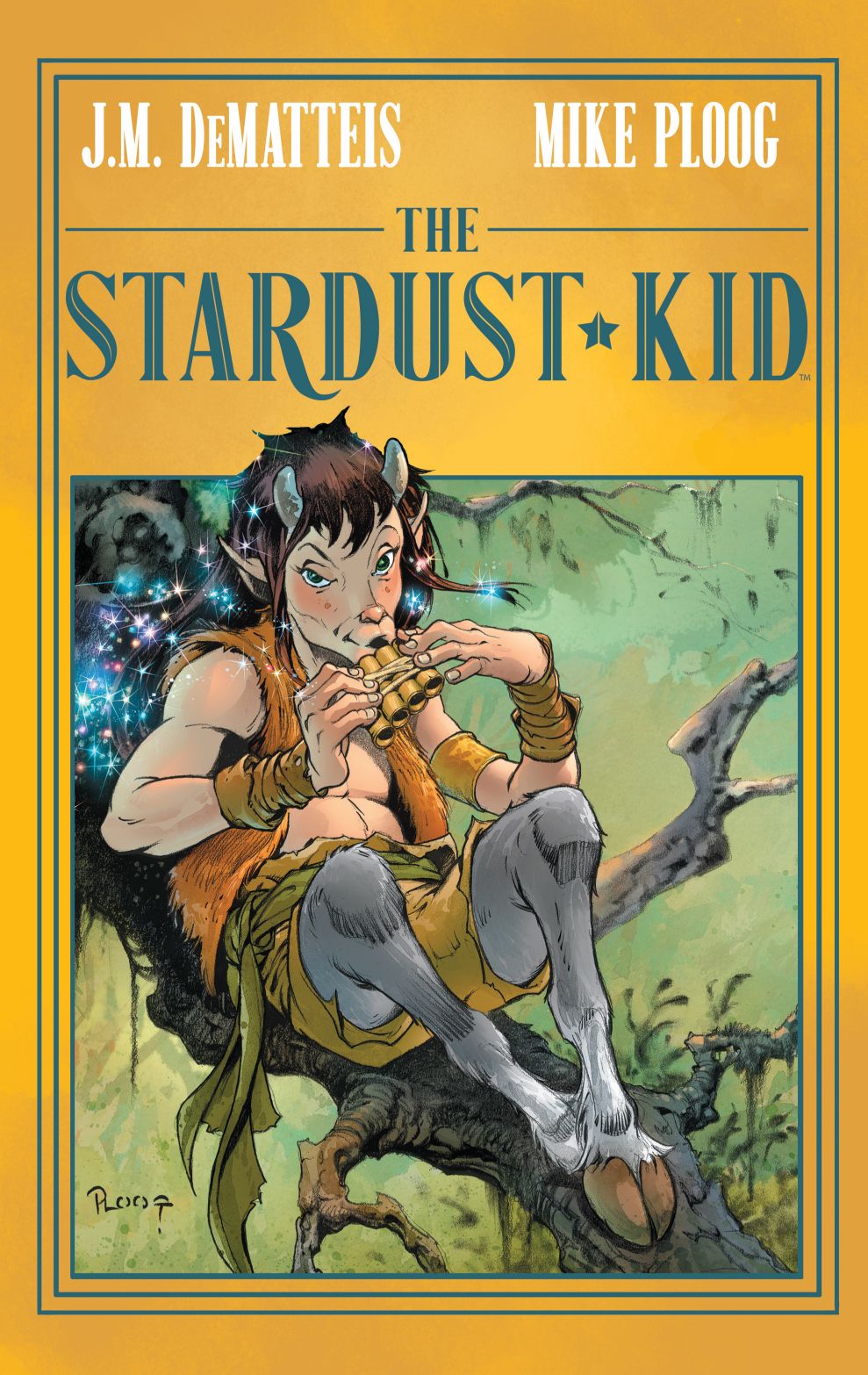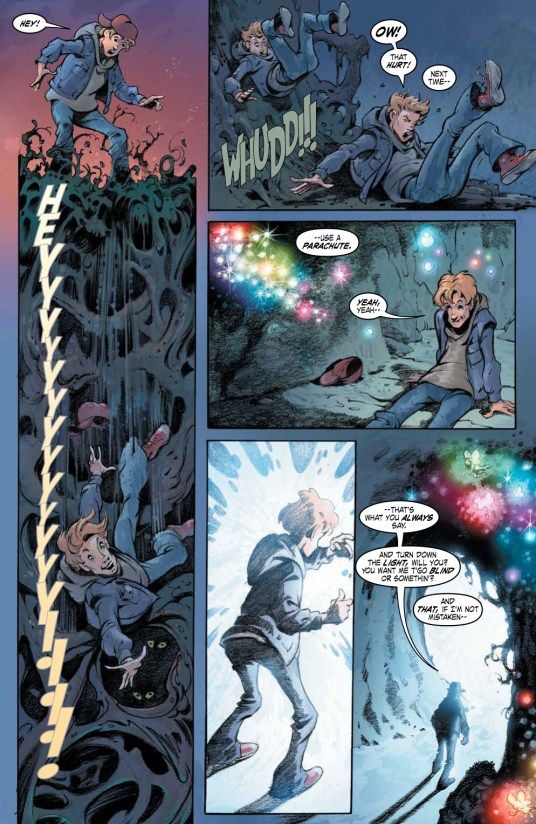J.M. DeMatteis has long been one of the great comics creators. He’s that rare writer who is able to work in many genres, in many styles and with many approaches. He wrote one of the great superhero stories, the dark Spider-Man tale "Kraven’s Last Hunt." With Keith Giffen and Kevin Maguire he’s made some of the funniest superhero comics ever with their various incarnations of Justice League. There have been the dark complex projects published at Epic and Vertigo and elsewhere like Moonshadow, Brooklyn Dreams, and Blood, which are among the most acclaimed ever made. He’s also been working in animation on multiple projects, including the upcoming Constantine animated series.
DeMatteis is also known for his comics for children. Abazad has had a complicated history as a comics series and a book series, and was his first collaboration with artist Mike Ploog. Afterwards, the two collaborated on another book, The Stardust Kid, which has just been republished by BOOM! Studios' Archaia imprint in a new hardcover edition.
RELATED: J.M. DeMatteis Discusses “Mercy,” Crafting Personal Work in Comics
As DeMatteis explains in the book’s introduction, The Stardust Kid is a very personal project that he had developed for decades before it finally saw print. He answered a few questions on the book in an interview with CBR.
CBR: You wrote about the backstory of the comic, which is longer than most of us knew. You mentioned that you had finished Moonshadow and that you wanted to take the lessons you learned from making that and apply them to a kid-friend story. What were those lessons? What did you take away from that book in particular?
Moonshadow gave me the freedom to throw off any preconceived notions of how a comic book should be written. I wasn’t in the Marvel or DC Universe, following some pre-set template (even if that template was only in my head). I approached writing Moonshadow the same way I would approach writing a novel. It allowed me to find my own unique voice. It was an exhilarating creative experience and I wanted to take that with me, not just with The Stardust Kid, but with everything I was writing.
The Stardust Kid does a great job of critiquing this notion of the past. The villain wants to recreate the world she remembers. Which is very different from the world that was. That feels much more political today than it did when you wrote it, but it’s always an excellent point.
It wasn’t something I did consciously. My job is to follow the characters and let them reveal the story to me. And isn’t it true that most nostalgia is rooted in, if not self-delusion, at least some level of self-created illusion? Even if it isn’t, we don’t have much choice, do we? We have to live in the world as it is now and embrace it. And then, 10 years from now, we’ll be looking back at it with a rosy nostalgia!
The Stardust Kid is a very self-contained story but I kept feeling as though there was a lot more ground that could be covered. After Abazad, were you conscious about making this a self-contained miniseries?
Abazad was cancelled mid-stream as a comic book, and, at the time we started work on The Stardust Kid, we didn’t know if Abazad would live on in any form. (It did. As a book series. And then that was cancelled mid-stream!) So I’m sure that -- even if it wasn’t conscious -- keeping the story self-contained was important, because we didn’t want to be abandoned in the middle of our epic again.
That said, the world of The Stardust Kid is a rich one and we always left a door open so that we could return to that world one day. Ploog is retired now -- what a loss for comics and fantasy illustration! -- but I’d still return to that world, if I could find the right artist and the right story.
You had worked with Mike Ploog before this on Abazad -- how did the two of you work together? What was the process like? Because the book does look and feel different from Abazad.
Ploog is one of the finest fantasy illustrators ever. There may be a handful out there as good as Mike but there’s nobody better. He’s as brilliant, as gifted, an artist as I’ve ever worked with. We clicked, creatively and personally, pretty much from our first Abazad conversation. Our collaboration was was magical.
With Abazad, I had the story and characters locked in before Mike came aboard, but, as I’ve said before, his interpretations of the characters and masterful visual storytelling is what made the book come alive. I never think of Abazad as “my” story. It’s ours. As to how we worked: In the beginning, as we were putting the book together, I would send Mike character descriptions, he’d send back designs, I’d ask for adjustments, he’d go back to work on it, and on and on till we arrived at visuals that we were both happy with.
I wrote full scripts -- full manuscripts for the book series -- and Mike followed those scripts closely, but -- and this is an important “but" -- he’s such a gifted, natural storyteller, his sense of design and layout is so brilliant, that be brought those scripts, and the project as a whole, to another level entirely.
With The Stardust Kid, the process was a little different. I’d had the bones of the story around for years and I shared one version of it with Mike. He came back with some valuable feedback that allowed me to see the story with fresh eyes, reshape it, make it better. Mike also had a stack of designs for fantasy characters he’d never used and so he’d send them to me, I’d look them over, and select certain creatures that I thought would work in the context of the story. Once I had that all together, I went off and wrote full scripts, just as I had with Abazad, and Mike did his usual brilliant job of bringing those scripts to life. (The new BOOM!/Archaia collection has tons of extras -- lots of never-before seen Ploog designs, outlines and script excerpts, a new introduction, etc. It’s a beautiful edition.)
I can’t overstate what a joy it was working with Mike. I was a massive Ploog fan before we met, so getting to work with an artist I’d so long admired and then discovering that he was also a wonderful human being? Working in comics doesn’t get much better than that.
One reason I ask is that you have this habit of working with a lot of great artists, and the work you make with them so often plays to their strengths and you seem to write for artists in a way that many writers don't always.
I don’t know if it’s conscious or not. I tend to make most of my creative choices on an intuitive level. But, once you’re collaborating with an artist whose work you know, whose strengths you understand, you can’t help but play to those strengths, even if it’s not conscious.
It’s been great to see a number of your books get collected and come back into print. But I’m still waiting for really nice new editions of Moonshadow and Blood, two of the greatest comics ever made.
We’re in discussions about new editions of both those books. Moonshadow will be first and I hope to be able to talk about that early next year.
RELATED: Constantine Lights Up With First Look At Animated Series
You’re always working on a number of things. Would you like to talk about what's coming up?
These days I continue to co-write DC’s Scooby Apocalypse with my old buddy Keith Giffen. I’ve got a new, creator-owned series for IDW Publishing -- Impossible, Inc. -- that will be out in the fall of 2018. It’s a big, fun, cosmic adventure and it’s illustrated by another one of my favorite collaborators, Mike Cavallaro, who worked with me on The Life and Times of Savior 28.
I’ve got another creator-owned series coming out in the latter part of 2018 -- it’s strange, dark and twisty, in the tradition of my Vertigo work -- but I don’t want to talk about the details of the story or the publisher till the official announcement is made.
2018 will also see the release of Constantine: The Animated Series, as both an episodic series on the CW Seed streaming platform and, eventually, a standalone movie, for DVD and streaming. David Goyer (who produced the live-action Constantine series) is producing, I’ve written all the scripts and the great Matt Ryan is returning as Constantine. It’s one of the very best animated projects I’ve ever been involved in and I can’t wait to see it out in the world.



